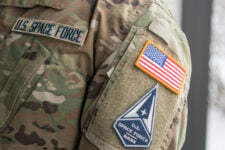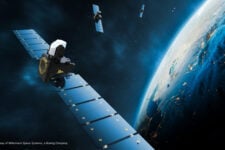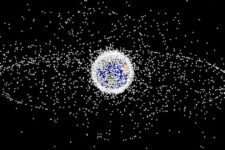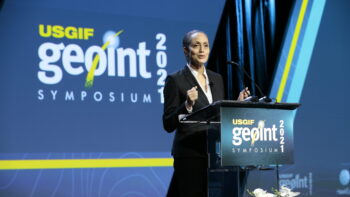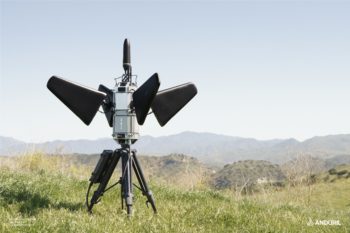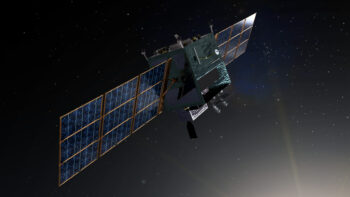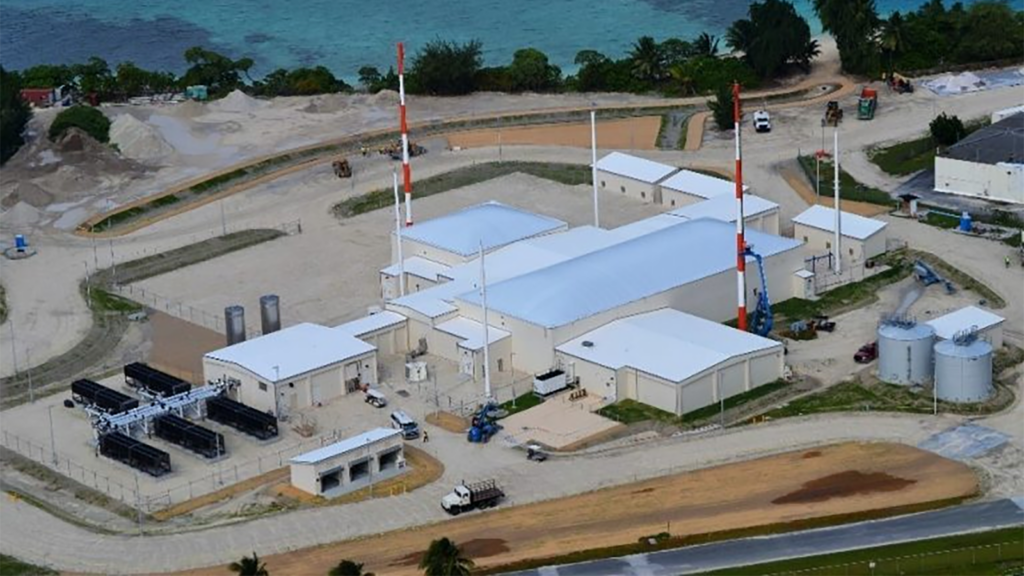
The Space Fence location in the Marshall Islands. (Lockheed Martin)
WASHINGTON: Improving integration and use of sensor data already available to create a full picture of what is happening in the heavens is one of the biggest challenges faced today by the Space Force’s newly named 18th Space Defense Squadron, according to its commander, Lt. Col. Matt Lintker.
“Right now, if I had to prioritize, I prioritize to be doing better with the data I have,” he told C4ISRNet’s annual conference today — noting that this includes data from commercial partners monitoring space traffic as well as data from the radar and telescopes part of the military’s Space Surveillance Network (SSN).
Lintker’s squadron, previously named the 18th Space Control Squadron and one of the units under Space Force Delta 2, was “re-designated” with the “defense” modification on April 13, but will remain “U.S. Space Command’s premier provider of continuous, comprehensive and combat-relevant space domain awareness,” a terse Space Force press release stated.
Space domain awareness, or SDA, is defined by the Space Force as the ability to detect, track and, most crucially, understand what is happening in space, especially with regards to potential threats from adversary satellites.
The Space Force and SPACECOM currently are hashing out how best to integrate the burgeoning amount of highly sophisticated — and in some cases more accurate than its own — space tracking data and analysis on offer from commercial firms both in the United States and abroad.
This effort has been complicated by the fact that the computer systems and software for integrating, managing and sharing SDA data with relevant users were built in and for a different era, and the Pentagon has been struggling for decades to update those capabilities.
“We are taking all of our current sensors and integrating them and network them in new and imaginative ways. Some of those sensors were designed back in the ’60s in the ’70s, and were never designed for the [communications] pipes that we have today, and for the processing capability we have today,” Lt. Gen. Michael Guetlein, head of Space Force’s Space Systems Command, told the C4ISRNet conference in a later interview.
Lintker said that while he’s “never going to turn down new sensors,” data integration continues to be a challenge — despite progress being made on developing data standards for “translating” among disparate data sources. For example, data translation is an issue for the Space Force’s newest sensor, the ground-based Space Fence radar, that came fully online in March 2020.
“Translating across the board,” he said, is his second biggest concern today.
“But again, just the integration of the data is really step one,” he added. “Step two is then being able to make sense of what that data is. So as we get more and more data, it does become increasingly challenging to kind of make sense of that from an operator’s perspective.”
This is where machine learning (ML) and artificial intelligence (AI) come in, Lintker said. Bringing on board those capabilities will “help us to then make sense of the larger amounts of data.”
AI/ML tools further will help operators change focus away from simply tracking objects in space — what is known in the civil world as space situational awareness — toward figuring out where the real threats are. Doing so is made ever more difficult by the boom in space activities over the past decade, meaning that space has become more congested and, at the same time, more contested as potential adversaries build up their military space capabilities.
“One of the biggest challenges I have is making sure the operators look past the numbers themselves. As you look across the board, the operational fleet of space systems from China and Russia has grown by 70% in the last few years,” Lintker said. “So how do I get the operators here to then focus in, again, balancing that congested versus contested nature?
‘And that is where AI and ML are gonna help us,” he explained, “to focus on where we need to put our attention.”
Lintker added that another long-standing challenge is being able to share data across classification levels, in particular for sharing data with allies — something NATO military space leaders have been trying to enhance.
“Like many things, especially when you look at the bureaucracy and the policy and how things have gone in the past, it’s the classification. So, working through old paradigms and old norms when it comes to: Is this classified at the right level’?” he said.
Space Force gets vote on IC Commercial Space Council
The status change should give the Space Force more weight in debate about how to share acquisition authority for commercial intelligence, surveillance and reconnaissance.








